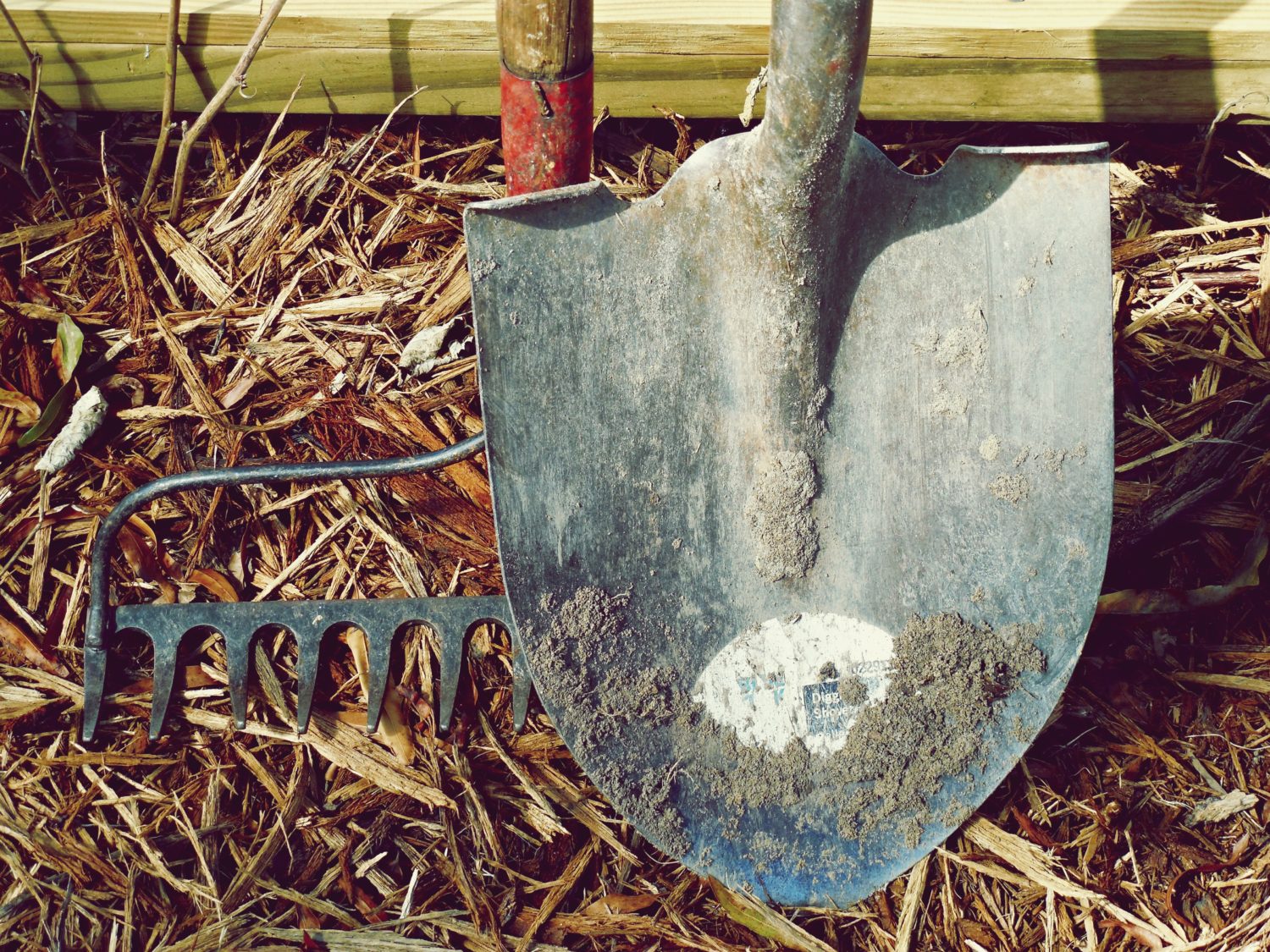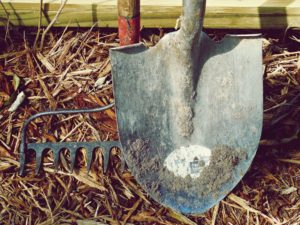Garden Tool Maintenance: A Gratifying Autumn Activity
Maintain garden tools at the end of the season to ensure easy digging next spring.
By Thomas Christopher
Pretty soon, I’ll be hanging up my spade and shovel for the season. Before I do, though, I’ll want to make sure their blades are nice and sharp. A sharp spade or shovel cuts through the soil and roots with far less effort; a dull one is a blunt instrument that does a sloppy job and even then, only with a lot more muscle.
Fortunately, it only takes a couple of minutes to turn dull tools into keen tools, and the only sharpening tool you’ll need is an inexpensive 10-inch, second cut “mill” file that you’ll find at any good hardware store or home center.
Start by cleaning any dirt and rust from the blade of your spade or shovel with a wire brush or steel wool. Then find the bevel on the edge of the blade, the area where steel was ground away at the factory to make a pointed edge. Spades and shovels are single-edged tools – that is, there’s a bevel on only one side of the blade’s edge. Typically, the bevel is along the side of the blade that faces upward when you are using the tool. Once you find the bevel, clamp the spade or shovel into a vice or fasten it to the top of your workbench with C-clamps, making sure that the beveled side of the blade is facing up.
Once you’ve fastened the blade down, take your mill file and run it across the edge of the spade or shovel blade, mimicking the angle of the original bevel. Generally, the bevel is at approximately a 45-degree angle.
A mill file cuts only as you push it forward across the blade; bear down on the file as you push to help the file cut, but lift the file clear between strokes because trying to cut with it on the back-stroke will only dull its teeth. Angle the file across the blade’s cutting edge as you push rather than cutting perpendicular to the blade. That will help you sharpen the spade or shovel’s edge evenly and will make the file work more efficiently.
Keep filing until you have removed all the nicks from the blade and until you can feel a sharp edge all along the tip. This edge will feel rough because the sharpening process will have left a “burr” of thin, bent metal along the blade’s cutting edge. To remove this, run the file along the underside of the blade a couple of times. Then wipe the blade with oil to keep it from rusting during storage and you are done.
Before going inside and putting your feet up, however, give a couple of minutes attention to your hoe. This also will benefit from sharpening; you’ll find it far easier to chop weeds with a sharp hoe than a dull one.
Again, clamp the hoe down with a vice or C-clamps; the cutting edge, the beveled edge of its blade should be facing upward. Use the mill file to restore the bevel and remove the burr. Oil, and put it away.
Impatient gardeners may opt for using an angle grinder to sharpen these tools. This is undeniably faster than filing the blades back into shape, but it can seriously damage the tools. Power grinding in this fashion generates a lot of friction and heat, and unless you are careful and use a light touch, you are likely to overheat the metal, taking the temper and hardness out of the steel.
There’s no law, of course, that you can only sharpen these tools in the fall. On the contrary, I find it helpful to re-sharpen occasionally throughout the gardening season, usually before I undertake any major digging or hoeing project.
Thomas Christopher is the co-author of “Garden Revolution” (Timber Press, 2016) and is a volunteer at Berkshire Botanical Garden. berkshirebotanical.org
Be-a-Better-Gardener is a community service of Berkshire Botanical Garden, one of the nation’s oldest botanical gardens in Stockbridge, MA. Its mission to provide knowledge of gardening and the environment through 25 display gardens and a diverse range of classes informs and inspires thousands of students and visitors on horticultural topics every year. Thomas Christopher is the co-author of Garden Revolution (Timber press, 2016) and is a volunteer at Berkshire Botanical Garden. berkshirebotanical.org.




